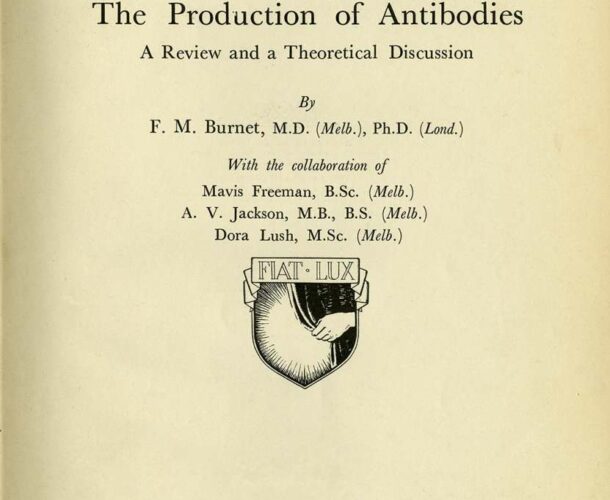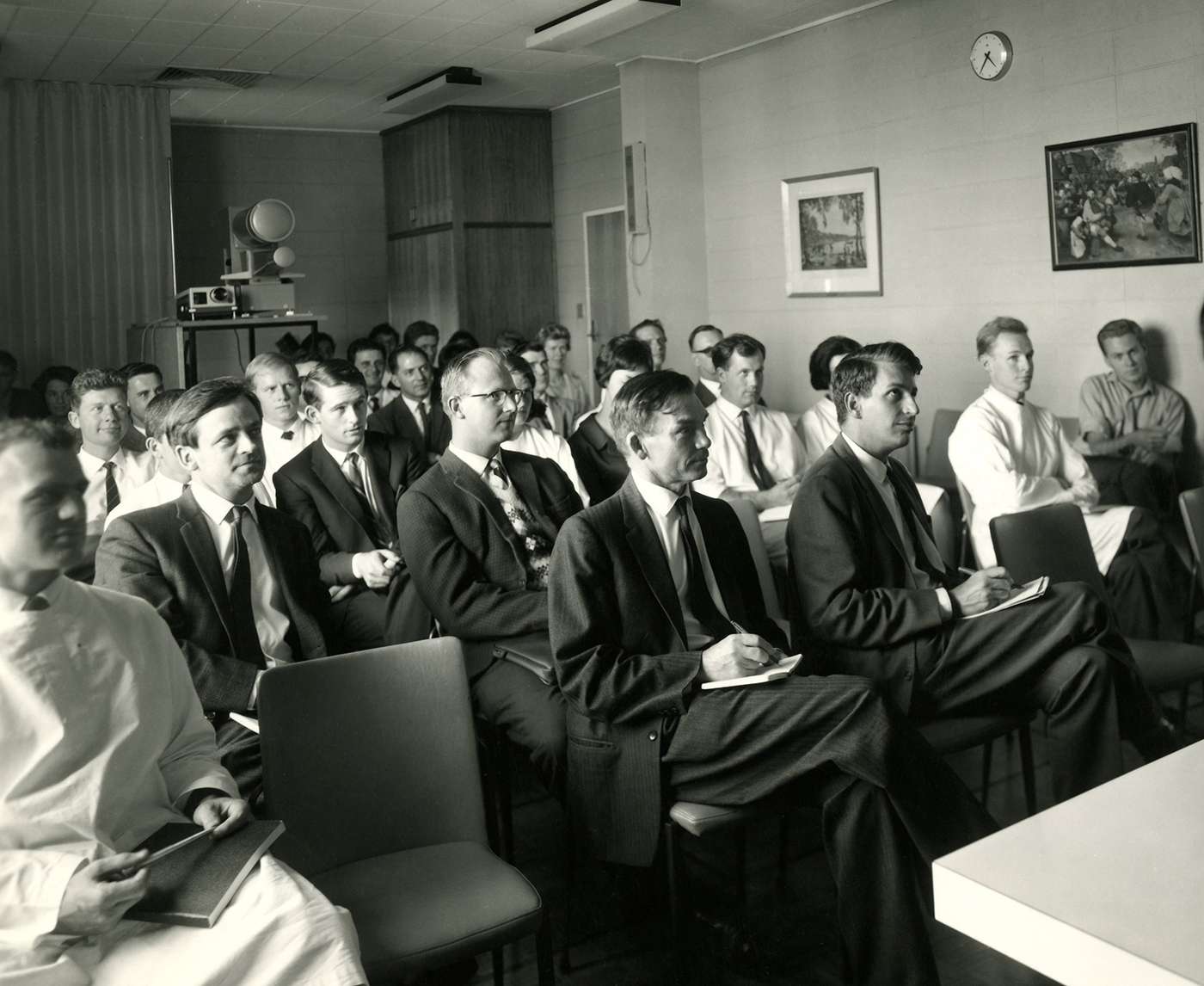Macfarlane Burnet and collaborator Frank Fenner publish The Production of Antibodies, which contains Burnet’s first reference to his ‘immune tolerance’ theory, for which he will later win the Nobel Prize with Sir Peter Medawar.
According to Burnet, in this book “was the first clear recognition that the differentiation of self from not-self was very important in immunology and that, to a large extent, it was developed in birds and mammals during embryonic life.”
At the time, very little was known about the immune system and the cell types that were vital for its function.
Burnet later described the book as a “minor collectors’ piece” because it contained the following prediction:
If, in embryonic life, expendable cells from a genetically distinct race are implanted and established, no antibody response should develop against the foreign cell antigen when the animal takes on independent existence.
This sentence provided the first suggestion that organ transplants might be possible, and initiated a major new topic of study – immune tolerance and rejection.







